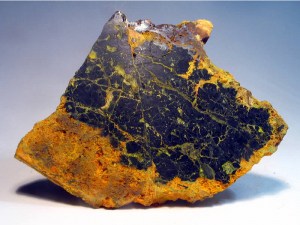
Uranium mining and milling is the starting process for all nuclear fuel cycles. In this process, uranium ore is extracted from the Earth’s crust, similarly to mining copper, zinc, and other metals. Uranium is often found with copper, phosphates, and other minerals; thus, it is often a co-product of other mining operations. The worldwide production of uranium in 2015 amounted to 60496 tonnes. Kazakhstan, Canada, and Australia are the top three producers and account for 70% of world uranium production.
Uranium is commonly found at low levels (a few ppm – parts per million) in all rocks, soil, water, plants, and animals (including humans). Uranium also occurs in seawater and can be recovered from ocean water. But only a few of the uranium ores known contain sufficient uranium (greater than 0.1%) to extract commercially. Significant concentrations of uranium occur in some substances such as uraninite (the most common uranium ore), phosphate rock deposits, and other minerals.

Natural uranium refers to uranium with the same isotopic ratio found in nature. It consists primarily of isotope 238U (99.28%). Therefore the atomic mass of the uranium element is close to the atomic mass of the 238U isotope (238.03u). Natural uranium also consists of two other isotopes: 235U (0.71%) and 234U (0.0054%). The abundance of isotopes in nature is caused by the difference in the half-lives. All three naturally-occurring isotopes of uranium (238U, 235U, and 234U) are unstable. On the other hand, these isotopes (except 234U) belong to primordial nuclides because their half-life is comparable to the age of the Earth (~4.5×109years for 238U).
Open Pit Uranium Mining
As with other types of hard rock mining, there are several extraction methods. In the case of uranium mining, it strongly depends on the concentration of uranium in the ore. For example, the ore extracted from the Australian Olympic Dam Mine has a concentration of 0.05 %, and most reserves have uranium with a concentration of between 0.1 bis 0.2 %. In Canadian Saskatchewan, the ore mined contains more than 20 % uranium.
In open pit mining, overburden is removed by drilling and blasting to expose the ore body, which is then mined by blasting and excavation using loaders and dump trucks. Open pit mines require large holes on the surface, larger than the size of the ore deposit, since the pit’s walls must be sloped to prevent collapse. In 2012, the percentage of the mined uranium produced by open pits was 19.9 percent. For example, the Rössing Uranium Mine in Namibia is the longest-running and one of the world’s largest open pit uranium mines.